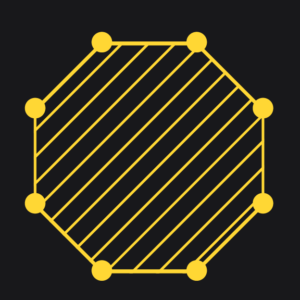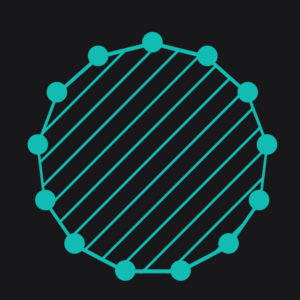This documentation aims to demonstrate how Spiral Dynamics was employed as a map for the development of the Cyclical Village. Through years of observing human patterns, needs, and pathways, we recognised the value of this study and model in structuring the territory for our community-driven village vision.
Our observations have led us to conclude that conflicts between humans often arise from two primary sources:
- The physical body, which includes survival instincts, traumas, and memories.
- The mind-body, which encompasses stages of evolution, needs, and desires.
Spiral dynamics can help expanding our capacity for-mutual understanding .
By recognising the different stages of human consciousness evolution and their associated world-views and values, individuals can identify the sources of most conflicts and be able to see the gift and necessity of each perspective.
Enables a group of people to address, honour and integrate their needs, desires, and different aspects of their lives without having to compromise who and where they are in their development.
It also helps them recognise the overall territory that can support their growth and development, enabling them to thrive and flourish.
Spiral Dynamics is a developmental theory and model of human consciousness, created by psychologists Clare W. Graves and Don Beck in the late 20th century. The theory posits that human beings evolve through different stages of consciousness, each with its own values, beliefs, and worldview.
Graves initially developed his theory in the 1950s while studying the behavior and beliefs of individuals and groups. Beck expanded upon Graves’ work in the 1990s and developed the Spiral Dynamics model, which became widely known after the publication of the book “Spiral Dynamics: Mastering Values, Leadership, and Change” in 1996.
The model is based on the idea that human consciousness evolves in a spiral pattern, with each stage building upon the previous one. The stages are color-coded, and each color represents a different level of consciousness, ranging from survival-focused (beige) to highly evolved (turquoise).
The Spiral Dynamics model has been used in a variety of fields, including business, politics, and social change movements. It has been applied in countries around the world to help individuals and groups understand and navigate cultural differences and conflicts.
The first tier of Spiral Dynamics
Each stage is characterised by a distinct worldview, values, and behaviours. The first tier is hierarchical in nature, with each stage building upon and transcending the previous one. Often these stages an in conflict in terms of needs, focus and way of relating to the spiritual and material world!
Needs:
- Need for physical survival, food, water, shelter
- Need for safety and protection from danger
- Need for immediate gratification of basic needs
Goals:
- Meeting basic survival needs, such as food, shelter, and safety
- Developing instinctual responses to environmental challenges
- Establishing basic forms of social organization for survival
Key Questions:
- How can we meet our basic survival needs in this environment?
- What are the best ways to adapt to our surroundings and protect ourselves?
- How can we cooperate with others to increase our chances of survival?
Organizational/Formal Structures:
- Small, kin-based groups focused on basic survival tasks, such as hunting and gathering
- Hierarchical structures based on strength and dominance
- Little formal organisation beyond the immediate family or tribe
- Beige: N/A – no formal organizational model.
Needs:
- Need for belonging and connection to a tribe or community
- Need for rituals and traditions that reinforce social bonds
- Need for a sense of purpose and identity within the group
Goals:
- Building strong interpersonal relationships within the family and community
- Fostering loyalty and traditions that create a sense of belonging and identity
- Supporting and caring for each other in times of need
Key questions:
- Who are my people, and how can I maintain strong relationships with them?
- What are the traditions and customs that define our group?
Organisation structures:
- Beige: N/A – no formal organizational model.
Needs:
- Need for power and control over one’s environment
- Need for self-expression and individuality
- Need for excitement, adventure, and stimulation
Goals:
- Asserting personal power and autonomy in pursuing goals
- Demonstrating courage and leadership in the face of challenges and obstacles
- Advocating for individual freedom and the right to self-determination
Key questions:
- How can I assert my power and dominance?
- How can I express myself and fulfill my desires?
Organisation structures:
- Sole Proprietorship/Partnership – small, independent businesses driven by a strong sense of individualism, such as freelance consultants or independent contractors.
Needs:
- Need for structure, order, and stability
- Need for a sense of purpose and meaning in life
- Need for rules, discipline, and moral guidelines
Goals:
- Creating order and structure within institutions and organizations
- Upholding moral principles and values that guide behavior and decision-making
- Respecting authority and hierarchy as a means of maintaining stability and predictability
Key questions:
- What are the rules and values that govern society, and how can I adhere to them?
- How can I contribute to the greater good and uphold tradition?
Organisation structure:
- Government Agency, Religious Organization – institutions that provide structure and stability in society, such as government agencies or religious institutions.
Needs:
- Need for autonomy and independence
- Need for achievement and success
- Need for innovation, progress, and personal growth
Goals:
- Valuing creativity and innovation in pursuing individual and collective success
- Developing entrepreneurial opportunities and solutions for oneself and others
- Advancing the boundaries of knowledge and technology through research and development
Key questions:
- How can I innovate and achieve success? What are my goals and how can I pursue them?
Organisation structures:
- Corporation, Franchise – large-scale, profit-driven organizations that focus on innovation and market competition, such as tech companies or fast-food chains.
Needs:
- Need for equality, diversity, and inclusivity
- Need for community and social responsibility
- Need for personal development and spiritual growth
Goals:
- Creating a sense of community and inclusivity that values diversity and cooperation
- Practicing empathy and compassion in interpersonal relationships and social justice advocacy
- Promoting environmental sustainability and ethical decision-making in all aspects of life
Key questions:
- How can I promote equality and cooperation?
- What are the needs and perspectives of others, and how can we work together to create a harmonious society?
Organisation structures:
- Non-Profit Organization, Social Movement/Activist Group, Professional Association, Educational Institution
- Organizations that prioritize social and environmental causes, such as non-profits, activist groups, or professional associations.
The second tier of Spiral Dynamics
The second tier of Spiral Dynamics begins with the yellow stage and represents the integral level of consciousness evolution. At this point people have an understanding of the previous hierarchy systems and a greater capacity to integrate diversity. There is the capacity to see and acknowledge the importance of all precedent stages and to put them in relationship to one an other. One of the key skillsets of this tier is the capacity to integrate paradoxes, polarities and transcend the personal experience!
Needs:
- Need for holistic thinking and systemic understanding
- Need for creativity and innovation in problem-solving
- Need for personal autonomy and authenticity
Goals:
- Integrating diverse perspectives and ideas to solve complex problems and generate new solutions
- Embracing adaptability and change as a means of growth and evolution
- Taking personal responsibility for one’s impact on the world and seeking to make positive contributions to society and the environment
Key questions:
- How can I integrate multiple perspectives and systems?
- How can I think flexibly and adapt to changing circumstances?
Organisation structures:
- Cooperative – organisations that prioritise collaboration and shared ownership, such as worker cooperatives or community land trusts.
Needs:
- Need for transcendence and interconnectedness
- Need for ecological sustainability and planetary consciousness
- Need for spiritual development and collective evolution.
Goals:
- A holistic understanding of the interconnectedness of all things
- A deep respect for the wisdom of nature and the universe
- The development of a global consciousness and sense of responsibility for the planet
Key Questions:
- How can we integrate all aspects of life into a holistic worldview?
- What can we learn from the wisdom of nature and the universe?
- How can we take responsibility for the well-being of the planet and all its inhabitants?
Organizational structure:
- Networks of individuals and organizations working towards a common vision
- Self-organizing systems that allow for adaptation and innovation
- Decision-making processes that are based on consensus and collaboration rather than hierarchy and authority
Goals:
- Maintaining the balance and harmony of the ecosystem
- Preservation of life and continuation of the species
- Existence in a state of pure being, with minimal disruption of the natural world
Key Questions:
- How can we work with the environment to ensure its longevity?
- What can we do to preserve and protect the biodiversity of the ecosystem?
- How can we create a sustainable way of life for ourselves and future generations?
Organizational Structures:
- None in the traditional sense, as the Coral phase is characterized by a lack of ego and individual identity
- Social structures are based on instinctual responses and natural patterns of behavior
- Cooperation and sharing are important values in this phase, as all individuals are seen as interconnected and interdependent.





